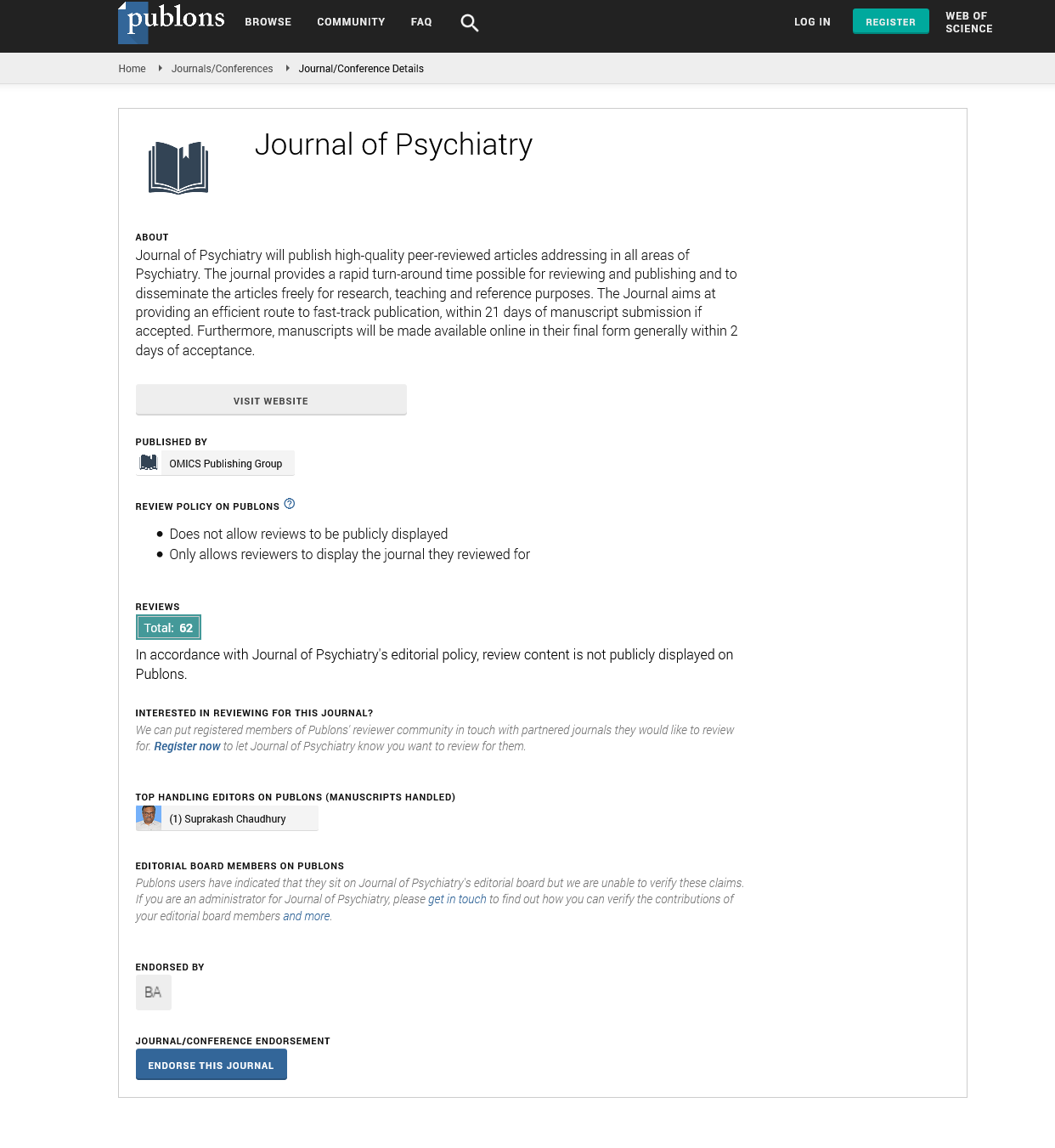Indexed In
- RefSeek
- Hamdard University
- EBSCO A-Z
- OCLC- WorldCat
- SWB online catalog
- Publons
- International committee of medical journals editors (ICMJE)
- Geneva Foundation for Medical Education and Research
Useful Links
Share This Page
Open Access Journals
- Agri and Aquaculture
- Biochemistry
- Bioinformatics & Systems Biology
- Business & Management
- Chemistry
- Clinical Sciences
- Engineering
- Food & Nutrition
- General Science
- Genetics & Molecular Biology
- Immunology & Microbiology
- Medical Sciences
- Neuroscience & Psychology
- Nursing & Health Care
- Pharmaceutical Sciences
Abstract
Survey of Psychiatric Disorders and Quality of Life among Kaohsiung Gas Explosion Victims 12 Months after the Event
Frank Huang-Chih Chou*, Joh-Jong Huang , Tsyr-En Grace Wu, Ju-Yu Chiu, Yi-Chen Chen, Guijing Lin1, Chao-Yueh Su and Pesus Chou
Objective: To investigate the probable disaster-related psychiatric disorders, such as major depressive episodes (MDEs) and post-traumatic stress disorder (PTSD); and quality of life (QoL) in survivors of a fossil fuel gas explosion in Taiwan with a long-term follow-up twelve months after the event.
Methods: We used two screening tools, including the Disaster-Related Psychological Screening Test (DRPST) and Short Form 12v2 (SF-12v2), to survey a representative sample of 486 participants (average age: 42.89 ± 16.05 years; M: 255, average age: 40.68 ± 15.92 years; F: 231; average age: 45.32 ± 16.20 years) twelve months after the event.
Results: Twelve months post-gas explosion, probable PTSD, probable MDE, probable PTSD and MDE, and non- PTSD or non-MDE (non-P or M) were present in 50 (10.3%), 14 (2.9%), 34 (7.0%), and 388 (79.8%) participants, respectively. The significant risk factors of probable PTSD or MDE and QoL in survivors were older age, female sex, physical injury, occupation, educational level, financial problems, probable PTSD and probable MDE.
Conclusion: Survivors still exhibited an increased prevalence of psychiatric impairment, and their quality of life was affected after twelve months. Thus, mental rehabilitation requires not only short-term intervention but also long-term follow-up and regular psychiatric management.

